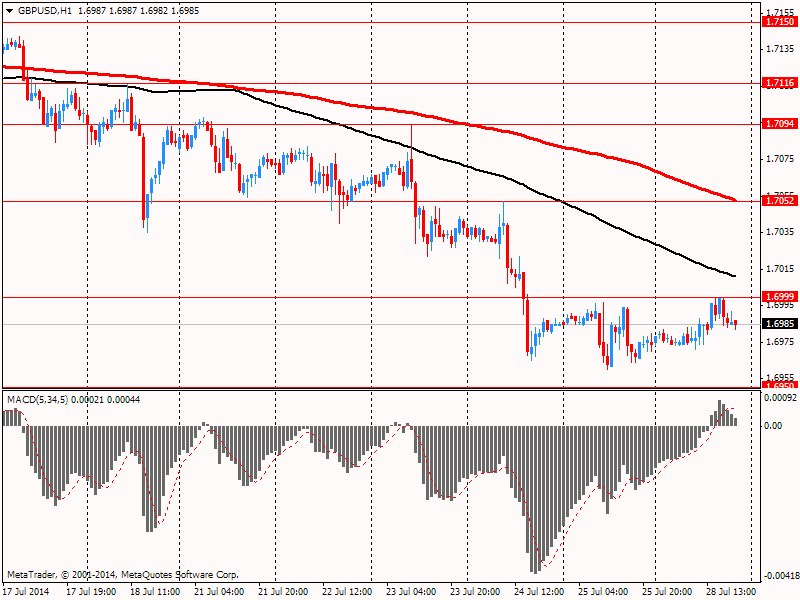- American focus: dollar fell slightly against the euro
Notícias do Mercado
American focus: dollar fell slightly against the euro
The euro exchange rate rose slightly against the dollar in terms of investor activity restrained. Market participants gradually shift focus to important statistical reports on the U.S. economy - preliminary data on GDP for the second quarter of 2014, the July report on unemployment and the index of business activity in the manufacturing sector. According to experts, the number of jobs in the U.S. economy in July increased by 228 thousand after increasing by 262 million in June, unemployment remained unchanged at 6.1%. U.S. GDP, according to the consensus of experts in April-June 2014 increased by 3%, after declining by 2.9%.
Focus will also have a Fed meeting. It is expected that at the upcoming meeting of the Monetary Policy FOMC, is likely to announce another round of quantitative easing to minimize the program (QE) for another $ 10 billion, bringing the total amount of monthly purchases of bonds of $ 25 billion With regard to the Committee, tone it is likely not practically change. Given that the document will be released before the release of the employment report, the economic statements are unlikely to be significantly different from previous ones. It is expected that Yellen will continue to argue that the rate of b / p at 6.1% is still pointing to weak growth in the labor market, as also evidenced by the slow growth of wages.
As for today's data, the report had little impact on the housing market, which showed: The index of pending home sales (PHSI), predictive indicator based on signed contracts, dropped 1.1 percent to 102.7 in June from 103.8 in May and was 7.3 percent lower than in June 2013 (110.8). Despite the decline, the index exceeds the level of 100, which is considered a middle-contract activity, the second consecutive month.
The British pound retreated from session high against the U.S. dollar, but continues to trade on the rise. Today we have published data on the secondary housing market, according to which the confidence of British homebuyers worsened in the second quarter. These results showed a survey by mortgage lender Halifax on Monday. The number of people who believe that today - "good time to buy," fell to 5% from 34% in the previous quarter, which is the most serious decline since April 2011. Approximately 57% of simplification believe that the time is now for sale real estate, and 32 believe the opposite; indicators, thus, form the balance 25. Craig McKinley, director of mortgages at Halifax, said: "It seems that we have reached a tipping point when the balance between buyers and sellers is not synchronized in the near future."

